Popular categories
Looking for a yarn?

100% Wool
from 4.55 $ /50g
The yarn cost is calculated from the pattern’s smallest size and the yarn’s cheapest product type. Looking for an even better price? You might find it on the DROPS Deals!
Sage Twist Cardigan
Knitted jacket in DROPS BabyMerino. The piece is worked top down with raglan, double neck and cables. Sizes S - XXXL.
DROPS Design: Pattern bm-101
Yarn group A
-------------------------------------------------------
SIZES:
S - M - L - XL - XXL – XXXL
Finished measurements:
Chest measurements: 90-98-106-116-128-140 cm = 35½"-38½"-41¾"-45¾"-50⅜"-55"
Full length: 52-54-56-58-60-62 cm = 20½"-21¼"-22"-22¾"-23⅝"-24⅜"
All measurements in charts are in cm.
MATERIALS:
DROPS BABY MERINO from Garnstudio (belongs to yarn group A)
350-400-450-500-550-600 g color 50, sage green
NEEDLES:
DROPS CIRCULAR NEEDLE SIZE 3 MM = US 2.5: Length 40 cm = 16" and 80 cm = 32".
DROPS CIRCULAR NEEDLE SIZE 2.5 MM = US 1.5: Length 40 cm = 16" and 80 cm = 32".
DROPS DOUBLE POINTED NEEDLES SIZE 3 MM = US 2.5.
DROPS DOUBLE POINTED NEEDLES SIZE 2.5 MM = US 1.5.
DROPS CABLE NEEDLE.
The technique MAGIC LOOP can be used – you then only need circular needle of 80 cm = 32" in each size.
DROPS BUTTONS NO 516: 6-6-6-7-7-7 items.
KNITTING GAUGE:
26 stitches in width and 34 rows in height with stockinette stitch = 10 x 10 cm = 4" x 4".
NOTE: Needle size is only a guide. If you get too many stitches on 10 cm = 4", change to a larger needle size. If you get too few stitches on 10 cm = 4", change to a smaller needle size.
-------------------------------------------------------
Alternative Yarn – See how to change yarns here
Yarn Groups A to F – Use the same pattern and change the yarn here
Yarn usage using an alternative yarn – Use our yarn converter here
-------------------------------------------------------

100% Wool
from 4.55 $ /50g
The yarn cost is calculated from the pattern’s smallest size and the yarn’s cheapest product type. Looking for an even better price? You might find it on the DROPS Deals!
- English (US/in)
- Česky
- Dansk
- Deutsch
- Eesti keel
- English (UK/cm)
- Español
- Français
- Íslenska
- Italiano
- Magyar
- Nederlands
- Norsk
- Polski
- Português
- Suomi
- Svenska
- English (UK/cm), Bulgaria
- English (UK/cm), Croatia
- English (UK/cm), Greece
- English (UK/cm), Latvia
- English (UK/cm), Lithuania
- English (UK/cm), Romania
- English (UK/cm), Slovenia
- Česky, Slovakia
Pattern instructions
EXPLANATIONS FOR THE PATTERN:
-------------------------------------------------------
PATTERN:
See diagrams A.1 and A.2. The diagrams show all rows in the pattern from the right side.
RAGLAN:
Increase 1 stitch on each side of A.1/A.2, from the right side, by making 1 yarn over. Work the yarn over as follows from the wrong side:
BEFORE A.1/A.2:
Purl the yarn over in the back loop. The stitch twists to the right.
AFTER A.1/A.2:
Slip the yarn-over off the left needle, then replace it the other way round (insert the left needle into the back when replacing it). Purl the yarn over in the front loop. The stitch twists to the left.
The new stitches are subsequently worked in stockinette stitch.
BUTTONHOLES:
Work buttonholes on the right band (when the garment is worn). Work from the right side when there are 4 stitches left on the row as follows: Make 1 yarn over, knit 2 together and knit 2. On the next row (wrong side), knit the yarn over to leave a hole.
The first buttonhole is worked straight after the neck. Then work the other 5-5-5-6-6-6 buttonholes with approx. 8½-9-9½-8-8½-9 cm = 3¼"-3½"-3⅝"-3⅛"-3¼"-3½" between each one.
DECREASE TIP (sleeves):
Decrease 1 stitch on either side of the marker as follows: Work until there are 3 stitches left before the marker, knit 2 together, knit 2 (marker sits between these 2 stitches), slip 1 stitch as if to knit, knit 1 and pass the slipped stitch over the knitted stitch.
-------------------------------------------------------
START THE PIECE HERE:
-------------------------------------------------------
JACKET – SHORT OVERVIEW OF THE PIECE.
The neck, yoke and body are worked back and forth with circular needle and top down. The sleeves are worked in the round with short circular needle/double pointed needles.
DOUBLE NECK:
Cast on 122-130-130-138-138-142 stitches with DROPS Baby Merino, using short circular needles sizes 3 MM = US 2.5 and 2.5 MM = US 1.5 held together. Remove the needle size 3 MM = US 2.5 keeping the stitches on the needle size 2.5 MM = US 1.5 (this gives you an elastic cast-on edge). Work rib as follows in the different sizes:
SIZES S, XL and XXL:
Purl 2, * knit 2, purl 2 *, work from *-* and finish with purl 2.
SIZES M, L and XXXL:
Knit 2, * purl 2, knit 2 *, work from *-* and finish with knit 2.
Work this rib back and forth for 4½ cm = 1⅝".
On the next 2 rows cast on 7 stitches at the end of each row = 136-144-144-152-152-156 stitches. Continue the rib, with 7 band stitches in garter stitch on each side, until the neck measures 9 cm = 3½" from the cast-on edge, adjust so that the next row is to be worked from right side.
Fold the neck double to the inside and work 1 more row of rib, working every 2nd stitch together with its corresponding stitch on the cast-on edge.
You now have a double neck. The yoke is measured from here. Purl 1 row from wrong
side (with front band stitches as before).
YOKE:
Change to circular needle size 3 MM = US 2.5, work and increase as follows from the right side:
7 band stitches in garter stitch, work stockinette stitch and increase 2-1-2-1-2-3 stitches evenly over the next 12-14-14-16-16-18 stitches (14-15-16-17-18-21 stitches on the front piece), A.1, work stockinette stitch and increase 4 stitches evenly over the next 10 stitches (14 stitches on the sleeve), A.1, work stockinette stitch and increase 6-4-6-4-6-8 stitches evenly over the next 22-26-26-30-30-34 stitches (28-30-32-34-36-42 stitches on the back piece), A.1, work stockinette stitch and increase 4 stitches evenly over the next 10 stitches (14 stitches on the sleeve), A.1, work stockinette stitch and increase 2-1-2-1-2-3 stitches evenly over the next 12-14-14-16-16-18 stitches (14-15-16-17-18-21 stitches on the front piece) and 7 band stitches in garter stitch - NOTE! The first BUTTONHOLE is worked now – read description above = 162-166-170-174-178-190 stitches. Work the pattern back from the wrong side.
Read the next section before continuing!
Read RAGLAN in explanations above and start to increase on the next row from the right side. AT THE SAME TIME, when diagram A.1 is finished in height continue with A.2 over A.1. REMEMBER THE KNITTING GAUGE!
Increase differently on the sleeves and body:
SLEEVES:
Increase every 2nd row 10-12-10-20-30-40 times, then every 4th row 10-12-15-12-9-4 times.
FRONT/ BACK PIECE:
Increase every 2nd row 24-27-31-40-49-54 times, then every 4th row 7-8-7-3-0-0 times.
When all the increases are finished there are 366-402-422-474-530-582 stitches. Between each A.2 there are 54-62-64-78-92-102 stitches on each sleeve, 90-100-108-120-134-150 stitches on the back piece and 52-57-61-67-74-82 stitches on each front piece.
Continue with stockinette stitch, bands in garter stitch and A.2 without increases and without cables (just knit and purl as shown in the diagram) until the yoke measures 25-27-28-30-32-34 cm = 9¾"-10⅝"-11"-11¾"-12½"-13⅜" from the neck.
Divide for the body and sleeves from the right side as follows: Work 7 band stitches in garter stitch, knit 53-58-62-68-75-83 (to middle of A.2), place the next 70-78-80-94-108-118 stitches on a thread without working them, cast on 12-12-14-14-16-16 stitches under the sleeve, knit 106-116-124-136-150-166 (back piece), place the next 70-78-80-94-108-118 stitches on a thread without working them, cast on 12-12-14-14-16-16 stitches under the sleeve, knit 53-58-62-68-75-83 and 7 band stitches in garter stitch.
The body and sleeves are finished separately and the piece is now measured from here.
BODY:
= 250-270-290-314-346-378 stitches. Continue with stockinette stitch and 7 band stitches in garter stitch on each side for a further 19-19-20-20-20-20 cm = 7½"-7½"-8"-8"-8"-8" or to desired length (there is approx. 4 cm = 1½" left). Knit 1 row from the right side and increase 14-18-22-26-26-30 stitches evenly spaced (do not increase the bands) = 264-288-312-340-372-408 stitches. Work back from the wrong side. Change to circular needle size 2.5 MM = US 1.5. Work rib from the right side in the different sizes as follows:
SIZES S, XL and XXL:
Work 7 band stitches in garter stitch, purl 2, * knit 2, purl 2 *, work from *-* and finish with 7 band stitches in garter stitch.
SIZES M, L and XXXL:
Work 7 band stitches in garter stitch, knit 2, * purl 2, knit 2 *, work from *-* and finish with 7 band stitches in garter stitch.
ALL SIZES:
Work this rib for 4 cm = 1½". Bind off with knit over knit and purl over purl. The jacket measures approx. 52-54-56-58-60-62 cm = 20½"-21¼"-22"-22¾"-23⅝"-24⅜" from the shoulder down.
SLEEVES:
Place the 70-78-80-94-108-118 stitches from the thread on the one side of the piece on short circular needle/double pointed needles size 3 MM = US 2.5 and knit up 1 stitch in each of the 12-12-14-14-16-16 stitches cast on under the sleeve = 82-90-94-108-124-134 stitches. Insert a marker in the middle of the new stitches under the sleeve.
Read DECREASE TIP and work stockinette stitch in the round for 4-4-4-4-2-2 cm = 1½"-1½"-1½"-1½"-¾"-¾". Now decrease as follows in the different sizes:
SIZES S, M, L, XL and XXL:
Decrease every 2½-2-1½-1-1 cm = 1"-¾"-½"-⅜"-⅜" 12-15-16-21-28 times.
SIZE XXXL:
Decrease alternately every ½ cm = ⅛" and 1 cm = ⅜" 32 times.
ALL SIZES:
= 58-60-62-66-68-70 stitches.
Work until the sleeve measures 36-34-34-32-31-30 cm = 14¼"-13⅜"-13⅜"-12½"-12¼"-11¾" or to desired length (approx. 4 cm = 1½" left). Change to double pointed needles size 2.5 MM = US 1.5. Knit 1 round and increase 10-8-10-6-8-10 stitches evenly spaced = 68-68-72-72-76-80 stitches. Work rib (knit 2, purl 2) for 4 cm = 1½". Bind off with knit over knit and purl over purl.
Work the other sleeve in the same way.
ASSEMBLY:
Sew the buttons onto the left band.
Diagram
All measurements in charts are in cm.

|
= knit from right side, purl from wrong side |

|
= purl from right side, knit from wrong side |

|
= between 2 stitches make 1 yarn over which is knitted twisted on the next row |

|
= place 3 stitches on cable needle in front of piece, knit 3, knit 3 from cable needle |
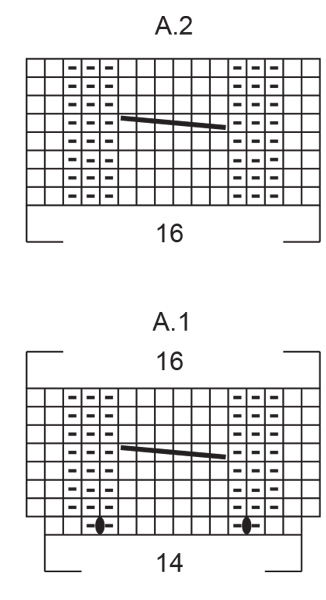
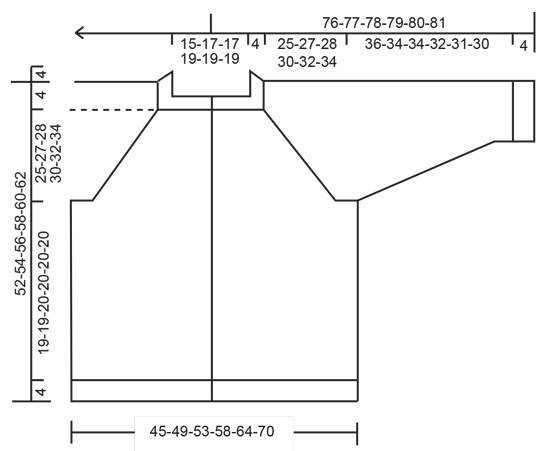
What can you do with our patterns? You can share DROPS patterns online, using the pattern original picture, materials, name and number. But you are NOT ALLOWED to reproduce the complete pattern digitally in any way. Yarn stores are welcome to use the DROPS pattern database to promote the sale of our assortment. You can print out our patterns, make as many copies as you’d like. The only thing we ask is that you don't make any changes / additions to the original printed document. And that the patterns according to the DROPS philosophy are given out to the consumers for free. Editorials that wish to publish our patterns in printed books or magazines can contact us for more information. The sale of garments based on DROPS patterns is permitted as long as they are sold as single items or per order. Further commercial use of the patterns is not permitted. It has to be clearly stated that the garment is made based on a design from DROPS DESIGN. The use of clothing labels of which DROPS DESIGN forms part is conditioned by the inclusion of the following text: “A DROPS DESIGN made by …..”. The use of DROPS photos for marketing purposes/sales is only permitted in connection with the use/sale of DROPS products. The photos may not be cut or edited and the logo should be clearly visible.
We reserve the right to withdraw the permission for use of our patterns at any time, notwithstanding the reason.
Each of our patterns has specific tutorial videos to help you.
These step-by-step tutorials might also help you:
Why is the knitting/crochet tension so important?
Knitting tension is what determines the final measurements of your work, and is usually measured per 10 x 10 cm. It is provided like so: number of stitches in width x number of rows in height - eg: 19 stitches x 26 rows = 10 x 10 cm.
The knitting tension is very individual; some people knit/crochet loosely while others work tightly. You adjust the knitting tension with the needle size, which is why the suggested needle size only serve as a guide! You need to adjust this (up or down) to ensure that YOUR knitting tension matches the knitting tension provided in the pattern. If you work with a different knitting tension than provided you will have a different yarn consumption, and your work will have different measurements than what the pattern suggests.
The knitting tension also determines which yarns can replace each other. As long as you achieve the same knitting tension you can replace one yarn with another.
See DROPS lesson: How to measure your tension/gauge
See DROPS video: How to make a gauge tension swatch
How do I know how many balls of yarn I need?
The required amount of yarn is provided in grams, eg: 450 g. To calculate how many balls you’ll need you first need to know how many grams are in 1 ball (25g, 50g or 100g). This information is available if you click on the individual yarn quality on our pages. Divide the amount required with the amount of each ball. For example, if each ball is 50g (the most common amount), the calculation will be as follows: 450 / 50 = 9 balls.
Can I use a different yarn than what the pattern suggests?
The important thing when changing from one yarn to another is that the knitting/crochet tension remains the same. This is so that the measurements of the finished piece will be the same as on the sketch provided. It is easier to achieve the same knitting tension using yarns from the same yarn group. It is also possible to work with multiple strands of a thinner yarn to achieve the knitting tension of a thicker one. Please try our yarn converter. We recommend you to always work a test swatch.
Please NOTE: when changing yarn the garment might have a different look and feel to the garment in the photo, due to individual properties and qualities of each yarn.
See DROPS lesson: Can I use a different yarn than the one mentioned in the pattern?
What are the yarn groups?
All our yarns are categorised into yarn groups (from A to F) according to thickness and knitting tension – group A contains the thinnest yarns and group F the thickest. This makes it easier for you to find alternative yarns to our patterns, should you wish to switch yarn. All yarns within the same group have a similar knitting tension and can easily replace each other. However, different yarn qualities have different structures and properties which will give the finished work a unique look and feel.
How do I use the yarn converter?
At the top of all our patterns you’ll find a link to our yarn converter, which is a helpful tool should you wish to use a different yarn than suggested. By filling in the yarn quality you wish to replace, the amount (in your size) and number of strands, the converter will present good alternative yarns with the same knitting tension. Additionally it will tell you how much you’ll require in the new qualities and whether you’ll need to work with multiple strands. Most skeins are 50g (some are 25g or 100g).
If the pattern is worked with multiple colours, every colour will have to be converted separately. Similarly, if the pattern is worked with several strands of different yarns (for example 1 strand Alpaca and 1 strand Kid-Silk) you will have to find alternatives for each, individually.
Why do you show discontinued yarns in the patterns?
Since different yarns have different qualities and textures we have chosen to keep the original yarn in our patterns. However, you can easily find options among our available qualities by using our yarn converter, or simply pick a yarn from the same yarn group.
It is possible that some retailers still have discontinued yarns in stock, or that someone has a few skeins at home that they would like to find patterns for.
The yarn converter will provide both alternative yarn as well as required amount in the new quality.
What size should I knit?
If you think it's hard to decide what size to make, it can be a good idea to measure a garment you own already and like the size of. Then you can pick the size by comparing those measures with the ones available in the pattern's size chart.
You'll find the size chart at the bottom of the pattern.
See DROPS lesson: How to read size chart
Why do I get the wrong knitting tension with the suggested needle size?
The needle size provided in the pattern serves only as a guide, the important thing is to follow the knitting tension. And since knitting tension is very individual, you will have to adjust the needle size to ensure that YOUR tension is the same as in the pattern – maybe you’ll have to adjust 1, or even 2 needle sizes, up or down to achieve the correct tension. For this, we recommend that you work test swatches.
Should you work with a different knitting tension than the one provided, the measurements of the finished garment might deviate from the measurement sketch.
See DROPS lesson: How to measure your tension/gauge
See DROPS video: How to make a gauge tension swatch
Why is the pattern worked top-down?
Working a garment top-down provides more flexibility and room for personal adjustment. For example it is easier to try the garment on while working, as well as making adjustments to length of yoke and shoulder caps.
The instructions are carefully explaining every step, in the correct order. Diagrams are adjusted to the knitting direction and are worked as usual.
How do I work according to a knitting diagram?
The diagram depicts all rows/rounds, and every stitch seen from the right side. It is read from bottom to top, from right to left. 1 square = 1 stitch.
When working back and forth, every other row is worked from the right side and every other row is worked from the wrong side. When working from the wrong side, the diagram will have to be worked reversed: from left to right, knit stitches are purled, purl stitches are knit etc.
When working in the round every round is worked from the right side and the diagram are worked from right to left on all rounds.
See DROPS lesson: How to read knitting diagrams
How do I work according to a crochet diagram?
The diagram depicts all rows/rounds, and every stitch seen from the right side. It is worked from bottom to top, from right to left.
When working back and forth every other row is worked from the right side: from right to left and every other row is worked from the wrong side: from left to right.
When working in the round, every row in the diagram are worked from the right side, from right to left.
When working a circular diagram you start in the middle and work your way outwards, counter clockwise, row by row.
The rows usually start with a given number of chain stitches (equivalent to the height of the following stitch), this will either be depicted in the diagram or explained in the pattern.
See DROPS lesson: How to read crochet diagrams
How do I work several diagrams simultaneously on the same row/round?
Instructions for working several diagrams after each other on the same row/round, will often be written like so: “work A.1, A.2, A.3 a total of 0-0-2-3-4 times". This means you work A.1 once, then A.2 is worked once, and A.3 is repeated (in width) the number of times provided for your size – in this case like so: S = 0 times, M = 0 times, L=2 times, XL= 3 times and XXL = 4 times.
The diagrams are worked as usual: begin with the first row in A.1, then work the first row in A.2 etc.
See DROPS lesson: How to read knitting diagrams
See DROPS lesson: How to read crochet diagrams
Why are the sleeves shorter in larger sizes?
The total width of the garment (from wrist-to-wrist) will be larger in the larger sizes, despite the actual sleeves being shorter. The larger sizes have longer sleeve caps and wider shoulders, so there will be a good fit in all sizes.
Where on the garment is the length measured?
The measurement sketch/schematic drawing provides information regarding the full length of the garment. If it’s a jumper or a jacket the length is measured from the highest point on the shoulder (usually closest to the neckline), and straight down to the bottom of the garment. It is NOT measured from the tip of shoulder. Similarly, the length of yoke is measured from the highest point on the shoulder and down to where yoke is split into body and sleeves.
See DROPS lesson: How to read a schematic drawing
What is a repeat?
Diagrams are often repeated on the round or in height. 1 repeat is the diagram the way it appears in the pattern. If it says to work 5 repeats of A.1 in the round, then you work A.1 a total of 5 times after/next to each other in the round. If it says to work 2 repeats of A.1 vertically/in height you work the entire diagram once, then begin again at the start and work the entire diagram one more time.
Why does the piece start with more chain stitches than it’s worked with?
Chain stitches are slightly narrower than other stitches and to avoid working the cast-on edge too tight, we simply chain more stitches to begin with. The stitch count will be adjusted on the following row to fit the pattern and measurement sketch.
Why increase before the rib edge when the piece is worked top-down?
The rib edge is more elastic and will contract slightly compared to, for example, stocking stitch. By increasing before the rib edge, you avoid a visible difference in width between the rib edge and the rest of the body.
Why increase in the cast-off edge?
It’s very easy to cast off too tightly, and by making yarn overs while casting off (and simultaneously casting these off) you avoid a too tight cast off edge.
See DROPS video: How to bind off with yarn overs (yo)
How do I increase/decrease on every 3rd and 4th row/round alternately?
To achieve an even increase (or decrease) you can increase on, for example: every 3rd and 4th row alternately, like so: work 2 rows and increase on the 3rd row, work 3 rows and increase on the 4th. Repeat this until the increase is complete.
See DROPS lesson: Increase or decrease 1 st on every 3rd and 4th row alternately
How can I work a jacket in the round instead of back and forth?
Should you prefer to work in the round instead of back and forth, you may of course adjust the pattern. You’ll need to add steeks mid-front (usually 5 stitches), and follow the instructions. When you would normally turn and work from the wrong side, simply work across the steek and continue in the round. At the end you’ll cut the piece open, pick up stitches to work bands, and cover the cut edges.
See DROPS video: How to knit steeks and cut open
Can I work a jumper back and forth instead of in the round?
Should you prefer to work back and forth instead of in the round, you may of course adjust the pattern so you work the pieces separately and then assemble them at the end. Divide the stitches for the body in 2, add 1 edge stitch in each side (for sewing) and work the front and back pieces separately.
See DROPS lesson: Can I adapt a pattern for circular needles into straight needles?
Why is the pattern slightly different than what I see in the photo?
Pattern repeats can vary slightly in the different sizes, in order to get the correct proportions. If you’re not working the exact same size as the garment in the photo, yours might deviate slightly. This has been carefully developed and adjusted so that the complete impression of the garment is the same in all sizes.
Make sure to follow instructions and diagrams for your size!
How do I make a women’s size garment into a men’s size one?
If you have found a pattern you like which is available in women’s size it’s not very difficult to convert it to men’s size. The biggest difference will be the length of sleeves and body. Start working on the women size that you think would fit across the chest. The additional length will be worked right before you cast off for the armhole/sleeve cap. If the pattern is worked top-down you can add the length right after the armhole or before the first decrease on sleeve.
Regarding additional yarn amount, this will depend on how much length you add, but it is better with a skein too many than too few.
How do I prevent a hairy garment from shedding?
All yarns will have excess fibres (from production) that might come off as lint or shedding. Brushed yarns (ie hairier yarns) have more of these loose, excess fibres, causing more shedding.
Shedding also depends on what is worn under or over the garment, and whether this pulls at the yarn fibres. It’s therefore not possible to guarantee that there will be no shedding
Below are some tips on how to get the best result when working with hairier yarns:
1. When the garment is finished (before you wash it) shake it vigorously so the looser hairs come off. NOTE: do NOT use a lint roller, brush or any method that pulls at the yarn.
2. Place the garment in a plastic bag and put it in your freezer - the temperature will cause the fibres to become less attached to each other, and excess fibres will come off easier.
3. Leave in the freezer for a few hours before taking it out and shaking it again.
4. Wash the garment according to the instructions on the yarn label.
Why does my garment pill?
Pilling is a natural process that happens to even the most exclusive of fibers. It's a natural sign of wear and tear that is hard to avoid, and that is most visible in high friction areas of your garment like a sweater's arms and cuffs.
You can make your garment look as new by removing the pilling, using a fabric comb or a pill/lint remover.
In the meantime, you can read the questions and answers that others have left to this pattern or join the DROPS Workshop on Facebook to get help from fellow knitters/crocheters!
You might also like...
Sage Twist Cardigan |
|||||||||||||
 |
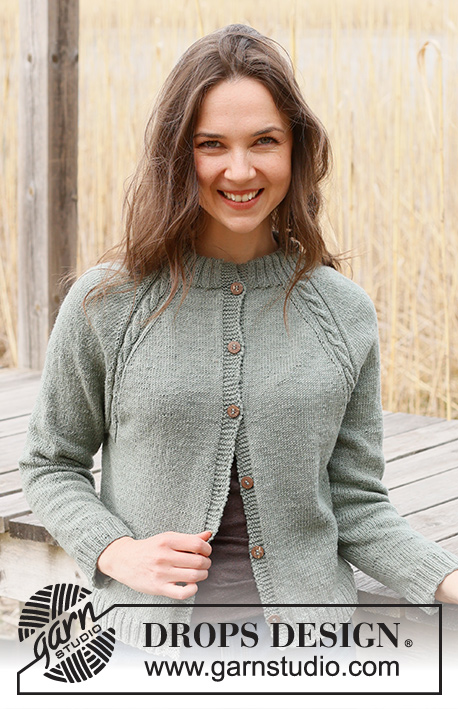 |
||||||||||||
Knitted jacket in DROPS BabyMerino. The piece is worked top down with raglan, double neck and cables. Sizes S - XXXL.
DROPS 237-32 |
|||||||||||||
|
------------------------------------------------------- EXPLANATIONS FOR THE PATTERN: ------------------------------------------------------- PATTERN: See diagrams A.1 and A.2. The diagrams show all rows in the pattern from the right side. RAGLAN: Increase 1 stitch on each side of A.1/A.2, from the right side, by making 1 yarn over. Work the yarn over as follows from the wrong side: BEFORE A.1/A.2: Purl the yarn over in the back loop. The stitch twists to the right. AFTER A.1/A.2: Slip the yarn-over off the left needle, then replace it the other way round (insert the left needle into the back when replacing it). Purl the yarn over in the front loop. The stitch twists to the left. The new stitches are subsequently worked in stockinette stitch. BUTTONHOLES: Work buttonholes on the right band (when the garment is worn). Work from the right side when there are 4 stitches left on the row as follows: Make 1 yarn over, knit 2 together and knit 2. On the next row (wrong side), knit the yarn over to leave a hole. The first buttonhole is worked straight after the neck. Then work the other 5-5-5-6-6-6 buttonholes with approx. 8½-9-9½-8-8½-9 cm = 3¼"-3½"-3⅝"-3⅛"-3¼"-3½" between each one. DECREASE TIP (sleeves): Decrease 1 stitch on either side of the marker as follows: Work until there are 3 stitches left before the marker, knit 2 together, knit 2 (marker sits between these 2 stitches), slip 1 stitch as if to knit, knit 1 and pass the slipped stitch over the knitted stitch. ------------------------------------------------------- START THE PIECE HERE: ------------------------------------------------------- JACKET – SHORT OVERVIEW OF THE PIECE. The neck, yoke and body are worked back and forth with circular needle and top down. The sleeves are worked in the round with short circular needle/double pointed needles. DOUBLE NECK: Cast on 122-130-130-138-138-142 stitches with DROPS Baby Merino, using short circular needles sizes 3 MM = US 2.5 and 2.5 MM = US 1.5 held together. Remove the needle size 3 MM = US 2.5 keeping the stitches on the needle size 2.5 MM = US 1.5 (this gives you an elastic cast-on edge). Work rib as follows in the different sizes: SIZES S, XL and XXL: Purl 2, * knit 2, purl 2 *, work from *-* and finish with purl 2. SIZES M, L and XXXL: Knit 2, * purl 2, knit 2 *, work from *-* and finish with knit 2. Work this rib back and forth for 4½ cm = 1⅝". On the next 2 rows cast on 7 stitches at the end of each row = 136-144-144-152-152-156 stitches. Continue the rib, with 7 band stitches in garter stitch on each side, until the neck measures 9 cm = 3½" from the cast-on edge, adjust so that the next row is to be worked from right side. Fold the neck double to the inside and work 1 more row of rib, working every 2nd stitch together with its corresponding stitch on the cast-on edge. You now have a double neck. The yoke is measured from here. Purl 1 row from wrong side (with front band stitches as before). YOKE: Change to circular needle size 3 MM = US 2.5, work and increase as follows from the right side: 7 band stitches in garter stitch, work stockinette stitch and increase 2-1-2-1-2-3 stitches evenly over the next 12-14-14-16-16-18 stitches (14-15-16-17-18-21 stitches on the front piece), A.1, work stockinette stitch and increase 4 stitches evenly over the next 10 stitches (14 stitches on the sleeve), A.1, work stockinette stitch and increase 6-4-6-4-6-8 stitches evenly over the next 22-26-26-30-30-34 stitches (28-30-32-34-36-42 stitches on the back piece), A.1, work stockinette stitch and increase 4 stitches evenly over the next 10 stitches (14 stitches on the sleeve), A.1, work stockinette stitch and increase 2-1-2-1-2-3 stitches evenly over the next 12-14-14-16-16-18 stitches (14-15-16-17-18-21 stitches on the front piece) and 7 band stitches in garter stitch - NOTE! The first BUTTONHOLE is worked now – read description above = 162-166-170-174-178-190 stitches. Work the pattern back from the wrong side. Read the next section before continuing! Read RAGLAN in explanations above and start to increase on the next row from the right side. AT THE SAME TIME, when diagram A.1 is finished in height continue with A.2 over A.1. REMEMBER THE KNITTING GAUGE! Increase differently on the sleeves and body: SLEEVES: Increase every 2nd row 10-12-10-20-30-40 times, then every 4th row 10-12-15-12-9-4 times. FRONT/ BACK PIECE: Increase every 2nd row 24-27-31-40-49-54 times, then every 4th row 7-8-7-3-0-0 times. When all the increases are finished there are 366-402-422-474-530-582 stitches. Between each A.2 there are 54-62-64-78-92-102 stitches on each sleeve, 90-100-108-120-134-150 stitches on the back piece and 52-57-61-67-74-82 stitches on each front piece. Continue with stockinette stitch, bands in garter stitch and A.2 without increases and without cables (just knit and purl as shown in the diagram) until the yoke measures 25-27-28-30-32-34 cm = 9¾"-10⅝"-11"-11¾"-12½"-13⅜" from the neck. Divide for the body and sleeves from the right side as follows: Work 7 band stitches in garter stitch, knit 53-58-62-68-75-83 (to middle of A.2), place the next 70-78-80-94-108-118 stitches on a thread without working them, cast on 12-12-14-14-16-16 stitches under the sleeve, knit 106-116-124-136-150-166 (back piece), place the next 70-78-80-94-108-118 stitches on a thread without working them, cast on 12-12-14-14-16-16 stitches under the sleeve, knit 53-58-62-68-75-83 and 7 band stitches in garter stitch. The body and sleeves are finished separately and the piece is now measured from here. BODY: = 250-270-290-314-346-378 stitches. Continue with stockinette stitch and 7 band stitches in garter stitch on each side for a further 19-19-20-20-20-20 cm = 7½"-7½"-8"-8"-8"-8" or to desired length (there is approx. 4 cm = 1½" left). Knit 1 row from the right side and increase 14-18-22-26-26-30 stitches evenly spaced (do not increase the bands) = 264-288-312-340-372-408 stitches. Work back from the wrong side. Change to circular needle size 2.5 MM = US 1.5. Work rib from the right side in the different sizes as follows: SIZES S, XL and XXL: Work 7 band stitches in garter stitch, purl 2, * knit 2, purl 2 *, work from *-* and finish with 7 band stitches in garter stitch. SIZES M, L and XXXL: Work 7 band stitches in garter stitch, knit 2, * purl 2, knit 2 *, work from *-* and finish with 7 band stitches in garter stitch. ALL SIZES: Work this rib for 4 cm = 1½". Bind off with knit over knit and purl over purl. The jacket measures approx. 52-54-56-58-60-62 cm = 20½"-21¼"-22"-22¾"-23⅝"-24⅜" from the shoulder down. SLEEVES: Place the 70-78-80-94-108-118 stitches from the thread on the one side of the piece on short circular needle/double pointed needles size 3 MM = US 2.5 and knit up 1 stitch in each of the 12-12-14-14-16-16 stitches cast on under the sleeve = 82-90-94-108-124-134 stitches. Insert a marker in the middle of the new stitches under the sleeve. Read DECREASE TIP and work stockinette stitch in the round for 4-4-4-4-2-2 cm = 1½"-1½"-1½"-1½"-¾"-¾". Now decrease as follows in the different sizes: SIZES S, M, L, XL and XXL: Decrease every 2½-2-1½-1-1 cm = 1"-¾"-½"-⅜"-⅜" 12-15-16-21-28 times. SIZE XXXL: Decrease alternately every ½ cm = ⅛" and 1 cm = ⅜" 32 times. ALL SIZES: = 58-60-62-66-68-70 stitches. Work until the sleeve measures 36-34-34-32-31-30 cm = 14¼"-13⅜"-13⅜"-12½"-12¼"-11¾" or to desired length (approx. 4 cm = 1½" left). Change to double pointed needles size 2.5 MM = US 1.5. Knit 1 round and increase 10-8-10-6-8-10 stitches evenly spaced = 68-68-72-72-76-80 stitches. Work rib (knit 2, purl 2) for 4 cm = 1½". Bind off with knit over knit and purl over purl. Work the other sleeve in the same way. ASSEMBLY: Sew the buttons onto the left band. |
|||||||||||||
Diagram explanations |
|||||||||||||
|
|||||||||||||

|
|||||||||||||

|
|||||||||||||
|
Have you made this or any other of our designs? Tag your pictures in social media with #dropsdesign so we can see them! Do you need help with this pattern?You'll find tutorial videos, a Comments/Questions area and more by visiting the pattern on garnstudio.com. © 1982-2024 DROPS Design A/S. We reserve all rights. This document, including all its sub-sections, has copyrights. Read more about what you can do with our patterns at the bottom of each pattern on our site. |
|||||||||||||
With over 40 years in knitting and crochet design, DROPS Design offers one of the most extensive collections of free patterns on the internet - translated to 17 languages. As of today we count 304 catalogs and 11422 patterns - 11417 of which are translated into English (US/in).
We work hard to bring you the best knitting and crochet have to offer, inspiration and advice as well as great quality yarns at incredible prices! Would you like to use our patterns for other than personal use? You can read what you are allowed to do in the Copyright text at the bottom of all our patterns. Happy crafting!







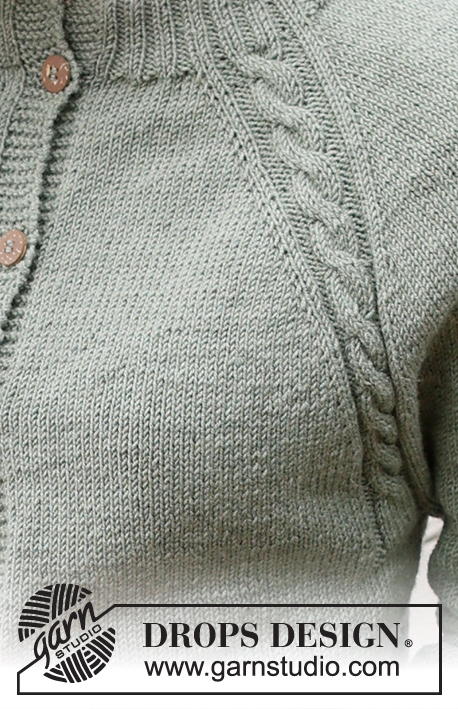

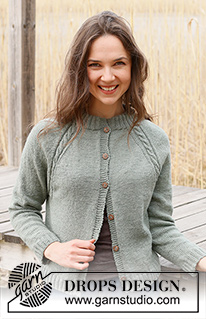
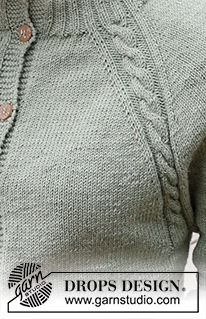

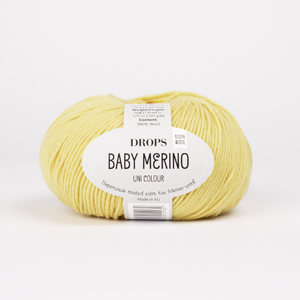
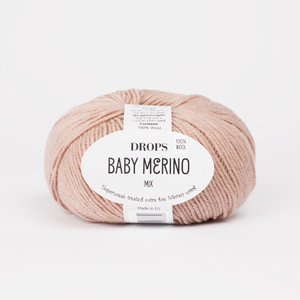

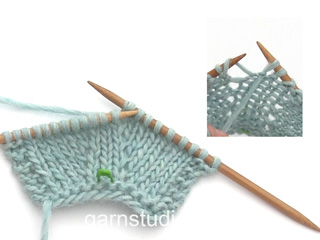














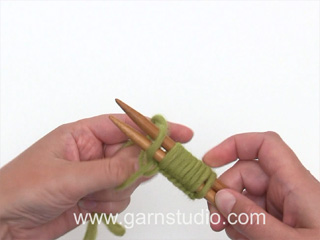
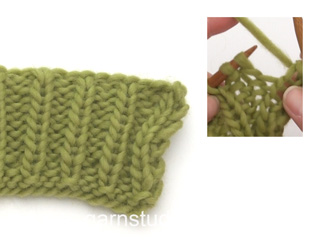
































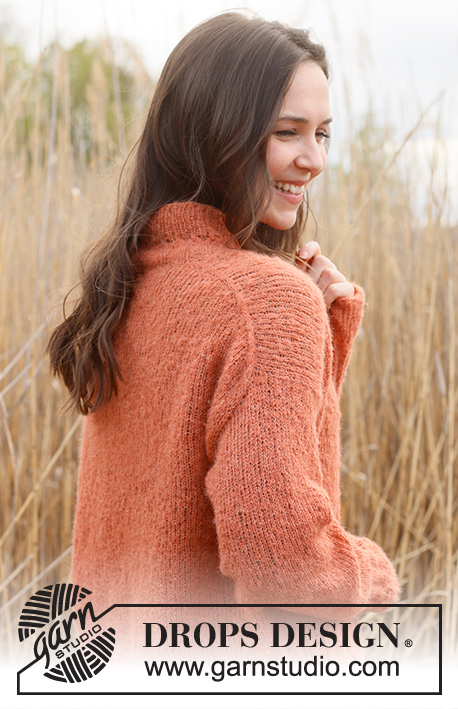


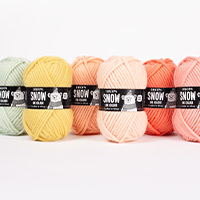
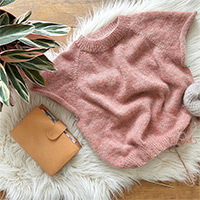
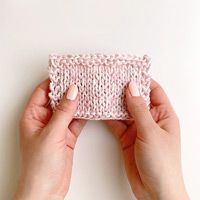

Comments / Questions (18)
Jag får inte största storleken xxxl att stämma med maskantalet vid uppdelningen på ok. Räknat både framlänges och baklänges. För mig fattas det 4 m på sista framstycket, på första varvet, på oket.
29.03.2023 - 17:50DROPS Design answered:
Hej Ingela, Du har 582 masker (sætter 118x2 på en tråd): Strikker 7+ 83 + slår 16 nye op +166 + slår 16 nye op + 83+ 7 = 378 masker :)
13.04.2023 - 09:46Thank you for your reply. I am as wise as ever. What does, "work A.2 over A.1." mean? I know A1 and A2 are the diagrams, but I don't understand what "work A.2 over A.1." means. I also have no idea what the "increase rhythm" means. How do I know, from the pattern, exactly when to increase and by how much?
27.02.2023 - 17:22DROPS Design answered:
Dear Mrs McLeod, after the 8 rows in A.1 are done, work A.2 instead of A.1 and repeat A.2 in height. You should increase for the raglan on sleeve and on body but you will have to increase sometimes 8 sts (body + sleeves) or only 4 sts (for ex in size S you incrase for body 24 times on every other round but only 10 times on every other round on sleeve then you will increase on sleeve on every 4th round, this means you continue increasing on body until you have increased 24 times on every other round (48 rounds in total) while you increase every other time for sleeve after the first 10 times. The number of increases and stitches will depend with the size you are working. Happy knitting!
28.02.2023 - 10:25Are we supposed to follow the directions for the yoke, plus the raglan increases at the same time, to the point where we separate the sleeves? This pattern is very hard to make sense of, it reads as though written for the writer and not for the ignorant. I'd be thankful for some help in knowing how to proceed after the written instructions labelled 'yoke'. Thank you.
27.02.2023 - 06:21DROPS Design answered:
Dear Mrs McLeod, start working yoke as explained, then after you have worked the increase row from RS and the return row from WS start to increase for raglan, at the same time work A.2 over A.1. The increases for raglan will be worked at a different rythm on body/sleeves this means you might have to increase 8 sts (both body and sleeves) or only 4 sts (body only on every 2nd row while you have to increase on every 4th row on sleeves). Happy knitting!
27.02.2023 - 11:13Hallo, Super tevreden met breipatroon.Duidelijke uitleg! Heb het vest gewassen,handwas zoals in voorschrift.Was eerst mooi strak en elastisch,maar na het wassen iets uitgeleurd.Kan ik het terug strakker krijgen, Groetjes
20.01.2023 - 09:42DROPS Design answered:
Dag Marie Jeanne,
Het komt vrij precies met het wassen van Merinogarens en het lubbert inderdaad snel uit. Ga niet wringen en laat het kledingstuk niet in het water staan. Laat het plat drogen. Probeer een volgende keer tussen een paar handdoeken te laten drogen, waarbij je het kledingstuk in de juiste vorm/afmetingen neerlegt (dus zeker niet aan trekken!)
22.01.2023 - 17:41Bonjour, Je tricote la taille L et j'ai terminé l'empiècement. Je n'ai pas les 290 mailles dont vous parlez mais 262 mailles soit une différence de 28 mailles. J'ai refait le calcul : 7 + 62 + 124 + 62 + 7 et je trouve bien 262, pas 290. A priori, il y a aussi une différence pour toutes les tailles, 24 mailles pour la taille S par exemple. Pouvez-vous m'expliquer ? Merci, Pascale
13.12.2022 - 13:28DROPS Design answered:
Bonjour Mme Egron, il manque les 14 mailles à monter sous chacune des manches, vous devez avoir: 7+62 (devant gauche) + 14 m (sous manche gauche) + 124 m (dos) + 14 m (sous manche droite) + 62 m + 7 (devant droit), ainsi vous avez bien: 7+62+14+124+14+62+7= 290 mailles. En taille S, on va monter seulement 12 m sous chaque manche - soit 2 x 12 = 24 mailles. Bon tricot!
13.12.2022 - 13:46Hola, estoy haciendo este modelo en talla S y no entiendo cómo luego de los aumentos llega a 366 ni cómo se distribuye entre mangas, frentes y espalda. Gracias!
06.12.2022 - 03:44DROPS Design answered:
Hola Maria, 366 es el número de puntos que deberías tener después de terminar todos los aumentos. Al inicio del raglán, te indicaban los puntos para cada parte, separados por A.1 (sobre el que después trabajas A.2). Se aumentan 40 puntos para cada manga (aumentas 2 puntos cada 2ª hilera 10 veces y después 2 puntos cada 4ª hilera 10 veces). = 80 puntos aumentados. En cada parte del cuerpo (delantero y espalda) aumentas 2 pts cada 2ª hilera 24 veces, después 2 pts cada 4ª hilera 7 veces. = 124 puntos aumentados. Por lo tanto, a partir de los 162 puntos iniciales, aumentando 80 puntos en las mangas y 124 en el cuerpo tienes 366 puntos.
06.12.2022 - 18:48Mod Sage Twist : no ho capito come si lavora il gettato sul rovescio per avere inclinazione a dx o sx , mi potete mandare il video se c'è? Grazie saluti
01.11.2022 - 07:42DROPS Design answered:
Buonasera Rosa Maria, deve seguire le indicazioni riportate nel paragrafo RAGLAN: in un caso deve lavorare la maglia a rovescio nel filo dietro della maglia invece di quello davanti, nell'altro caso deve prima "ritorcere" la maglia sul ferro e poi lavorare il gettato a rovescio normalmente. ecco un video che può aiutarla: Buon lavoro!
01.11.2022 - 16:52Hallo, habe die Jacke bis zum Beginn des Abschnitt's Passe in Gr L gestrickt. Bei der beschriebenen Zunahme besteht eine Maschendifferenz. Es sollen 26 M zugenommen werden (170-144) beschrieben werden nur 18 M. Wenn man den Maschenbestand insgesamt addiert kommt man mit den beschriebenen Zunahmen nur auf 106 M statt genannten 170 M?? Lieben Gruß Monika
29.10.2022 - 06:15DROPS Design answered:
Liebe Monika, so wird es zugenommen: 2 Maschen beim linken Vorderteil + 4 Maschen bei jeder Ärmel + 6 Maschen beim Rückenteil + 2 Maschen beim rechten Vorderteil + 2 Maschen in jedem von den 4 gestrickten A.1 = 2+8+6+2+8=26 Maschen. Viel Spaß beim stricken!
31.10.2022 - 08:36